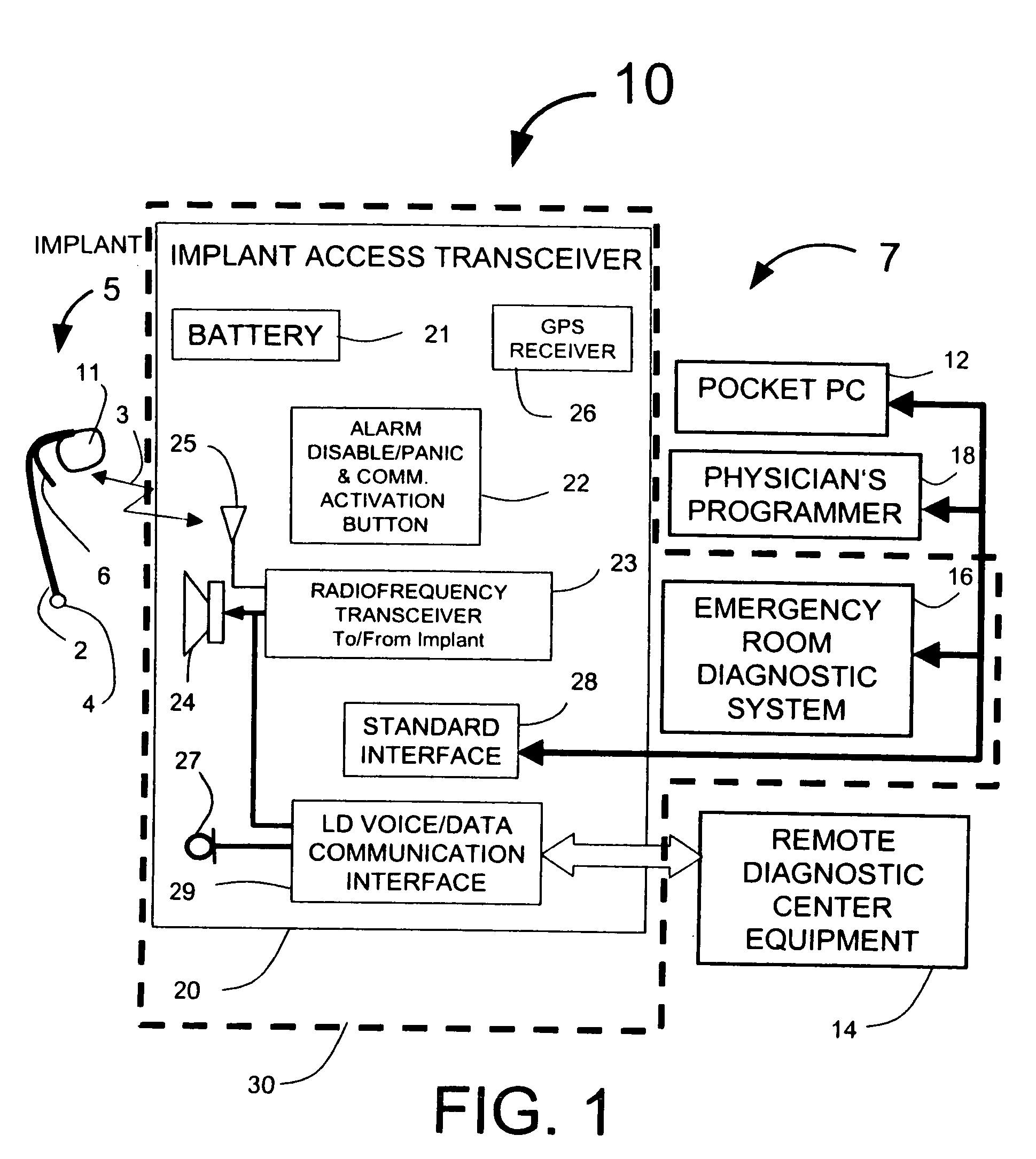Emergency room triage system
a triage system and emergency room technology, applied in the field of emergency room triage system, can solve the problems of unreliable detection of ami from a standard 12-lead ecg, high risk of ami in coronary atherosclerosis, and so as to reduce the time to treatment, increase the battery life of implants, and display and print quickly
- Summary
- Abstract
- Description
- Claims
- Application Information
AI Technical Summary
Benefits of technology
Problems solved by technology
Method used
Image
Examples
Embodiment Construction
[0044]FIG. 1 illustrates one embodiment of the Guardian system 10 consisting of an implanted cardiosaver system 5 and external equipment 7. The cardiosaver system 5 includes a cardiosaver 11, an antenna 6 and an electrode 4 that is part of a lead 2. The cardiosaver 11 includes electronic circuitry that can detect a cardiac event such as an acute myocardial infarction or arrhythmia and can warn the patient with an internal alarm signal when the event occurs. The cardiosaver 11 can store the patient's electrogram for later readout and can send and receive wireless signals 3 to and from the external equipment 7 via the antennas 6 and 25. The wireless signals would typically use the FCC medical band (Medical Implant Communications Service) and can be implemented using a radiofrequency system such as the CC 1000 chipset from CHIPCOM as described by Fischell et al in U.S. patent application Ser. No. 10 / 994,466 which is incorporated herein by reference. The functioning of the cardiosaver s...
PUM
 Login to View More
Login to View More Abstract
Description
Claims
Application Information
 Login to View More
Login to View More - R&D
- Intellectual Property
- Life Sciences
- Materials
- Tech Scout
- Unparalleled Data Quality
- Higher Quality Content
- 60% Fewer Hallucinations
Browse by: Latest US Patents, China's latest patents, Technical Efficacy Thesaurus, Application Domain, Technology Topic, Popular Technical Reports.
© 2025 PatSnap. All rights reserved.Legal|Privacy policy|Modern Slavery Act Transparency Statement|Sitemap|About US| Contact US: help@patsnap.com



